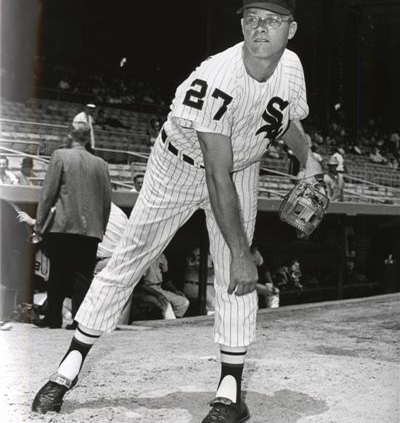Anomalies of Protested and Suspended Baseball Games
This article was written by Stephen D. Boren
This article was published in Fall 2012 Baseball Research Journal
Most major league baseball games that are protested or suspended do not result in unusual situations. Actually, until 1943, suspended/successfully protested games were very rare: there were only five such games from 1876 through 1942. Since then, there have been 153 such games.
Most protests are quickly dismissed by league presidents. Many suspended games are merely resumed the next day, or perhaps two days later. However, there have been some very peculiar box scores and results after protested/suspended games were finally finished. In addition there was the famous Pine Tar Game of July 24, 1983. George Brett of the Kansas City Royals hit a two-out home run in the ninth off of New York Yankee reliever Goose Gossage apparently giving them a 5–4 lead, but Brett was called out because there was too much pine tar on his bat, seemingly ending the game. However, the Royals’ appeal was upheld and the game was resumed on August 18. The only further oddity of this game was that left-hander Don Mattingly was put in as a second baseman and pitcher Ron Guidry played center field.
ALMOST PLAYING FOR BOTH CLUBS IN THE SAME GAME
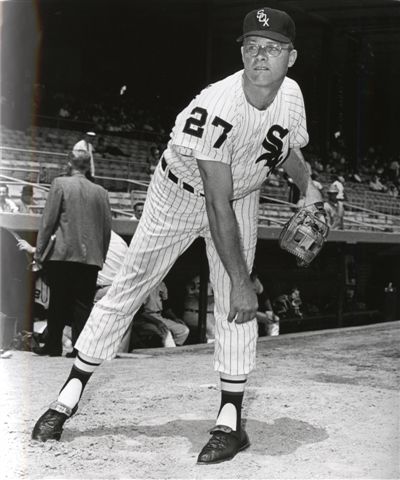 No player has played for both teams in a suspended or protested game. There is a misconception that Jim Brosnan did this. This belief probably originated from Harry Simmons’ So You Think You Know Baseball? He posed a hypothetical situation where Brosnan was both the winning pitcher and the losing pitcher in one game because of being traded after a suspended game. Compounding the confusion, Brosnan was involved in a number of suspended games.
No player has played for both teams in a suspended or protested game. There is a misconception that Jim Brosnan did this. This belief probably originated from Harry Simmons’ So You Think You Know Baseball? He posed a hypothetical situation where Brosnan was both the winning pitcher and the losing pitcher in one game because of being traded after a suspended game. Compounding the confusion, Brosnan was involved in a number of suspended games.
There have been a few times that a major league player could have played for both teams in a single game. Of note, this did happen in a National Basketball Association game originally begun November 8, 1978 and completed on March 23, 1979. Harvey Catchings and Ralph Simpson played for the Philadelphia 76ers and Eric Money played for the New Jersey Nets when the game began, but were traded to the opposing teams (February 7, 1979) by the time the suspended game was resumed. All three played for both teams (Al Skinner was also in the trade, but did not play in either game).
Baseball’s first theoretical instance was June 17, 1945 when the Brooklyn Dodgers played the Boston Braves and the game was suspended and finished August 4, 1945. Reserve Dodger Morrie Aderholt (second baseman and outfielder) did not play on either date. However, he was a Dodger until he was sold to the Boston Braves August 1, 1945. Thus, he had the possibility of playing for both teams, though he did not.
The next situation occurred June 17, 1951 in a game between the New York Giants and the Pittsburgh Pirates. The game was suspended and then finished on July 25, 1951. Reserve infielder Hank Schenz pinchran for the Pirates in the eighth inning. He was sold to the Giants on June 30, 1951, but did not play on the resumed date.
Three players had the chance to play for both teams during the April 27, 1952 Chicago White Sox–St. Louis Browns game that was suspended and then resumed July 3, 1952. On June 15, Leo Thomas and Tom Wright were traded by the Browns to the White Sox for Al Zarilla and Willie Miranda (Miranda was sold back to the Sox 13 days later). Thomas had played third base for the Browns on April 27; Cass Michaels replaced him when the game was resumed. However, Thomas did not play for the Sox on July 3. Wright and Zarilla did not play in either part of the game.
Chris Cannizzaro came close to performing this achievement. He was the starting catcher on May 16, 1971, in the first game of a San Diego Padres–Chicago Cubs doubleheader. Bob Barton, the regular Padres catcher caught the second game, which was suspended after six innings. Three days later, Cannizzaro was traded to the Cubs. On August 4, 1971 the game was completed, but Cannizzaro did not play. Ironically, he played in the schedule game that followed later that day.
Dave Hamilton also approached playing for two different clubs in the same game. The second game of a St. Louis Cardinals–Pittsburgh Pirates doubleheader on April 23, 1978 was suspended and resumed June 26, 1978. He pitched in the first game of the double header as a reliever (three scoreless innings). However, he was not used in the second game despite two other relievers being used. He was sold by the Cardinals to the Pirates May 28, 1978 and did not play in the resumed game. Like Cannizzaro, he did play in the regularly scheduled game that followed it that day.
PLAYING FOR TWO MAJOR LEAGUE TEAMS IN THE SAME DAY
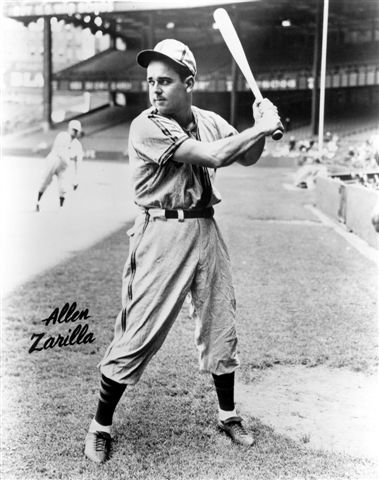 Although no baseball player has played for two teams in the same game, seventeen have played for two clubs on the same day (besides Max Flack, Cliff Heathcote, and Joel Youngblood who were not in suspended games). This involved playing in a game for one team, and then being traded to a team that later continued a suspended/protested game.
Although no baseball player has played for two teams in the same game, seventeen have played for two clubs on the same day (besides Max Flack, Cliff Heathcote, and Joel Youngblood who were not in suspended games). This involved playing in a game for one team, and then being traded to a team that later continued a suspended/protested game.
On June 13, 1943, Dee Moore of the Brooklyn Dodgers pinch-hit unsuccessfully for Frenchy Bordagaray in a game against the Boston Braves. That same day, the Philadelphia Phillies and the New York Giants had a 3–3 tie game suspended after nine innings. On July 19, Moore was sold on waivers to the Phillies. When the Philadelphia–New York game was resumed on August 6, Moore played first base for the Phillies in the tenth and again was 0-for-1 at bat. Thus he had played for two different teams in a June 13, 1943 game.
On July 16, 1944 Vern Kennedy of the Cleveland Indians pinch-ran in a game against the St. Louis Browns. That same day, the Giants and Phillies had a suspended game. On July 28, 1944, Kennedy was sold to the Phillies and he pitched in the resumed game. Thus on July 16, 1944, Kennedy played for both the Cleveland Indians and the Philadelphia Phillies in major league games.
Glen Gorbous on April 24, 1955, while playing for the Cincinnati Reds, pinch-hit for Johnny Temple in the seventh inning and was called out on strikes. On that same day, the Phillies and Pittsburgh Pirates had a game suspended with one out in the bottom of the eighth inning. On April 30, 1955, Gorbous, Andy Seminick, and Jim Greengrass were traded to Philadelphia for Smoky Burgess, Steve Ridzik, and Stan Palys. When the trade was completed on June 28, 1955, Gorbous replaced Bob Bowman in the ninth inning for the Phillies. Thus he played on two teams on the same day. Of note, Seminick did play in the resumed game, but had not played for Cincinnati on April 24.
Bill Virdon played for the St. Louis Cardinals against the Chicago Cubs in a May 13, 1956 doubleheader. He went 0-for-4 in each game. He was traded to the Pittsburgh Pirates on May 17, 1956. On May 13, 1956 the Philadelphia Phillies and Pittsburgh Pirates played a game that was suspended and later resumed on July 3, 1956. Virdon pinch hit for Eddie O’Brien in the ninth for the Pirates and singled.
Bob Usher played for the Cleveland Indians against the Detroit Tigers on April 21, 1957. In the ninth he pinch-hit for Don Mossi and walked. He was traded to the Washington Senators May 15, 1957. On April 21, 1957 the Baltimore Orioles and Washington Senators played a game that was suspended and later resumed on May 27, 1957. Usher replaced Whitey Herzog in center field and went 0-for-2.
Danny O’Connell played for the Milwaukee Braves against the Cincinnati Reds on April 28, 1957, getting one double in three at-bats. He was traded to the New York Giants on June 15, 1957 in the Red Schoendienst transaction. He replaced Red in the lineup when the April 28, 1957 suspended game between the Giants and Phillies was resumed on August 16, 1957 and walked in his only appearance.
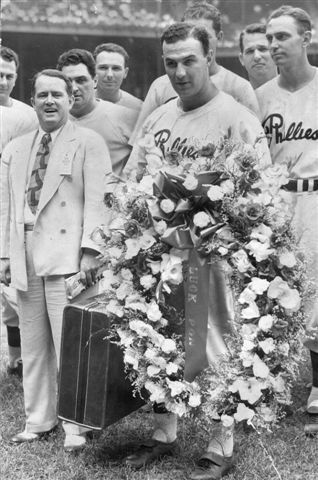 Ron Northey pinch-hit for Earl Battey for the Chicago White Sox against the Kansas City Athletics on April 28, 1957 (he flied out). He later was released by the Sox on May 29, 1957 and signed with the Philadelphia Phillies the next day. On April 28, 1957 the Giants and Phillies played a game that was suspended and later resumed on August 16, 1957. Playing for the Phillies, Northey grounded out for Turk Farrell. Thus, Northey pinch-hit for two different teams on the same date, in different leagues.
Ron Northey pinch-hit for Earl Battey for the Chicago White Sox against the Kansas City Athletics on April 28, 1957 (he flied out). He later was released by the Sox on May 29, 1957 and signed with the Philadelphia Phillies the next day. On April 28, 1957 the Giants and Phillies played a game that was suspended and later resumed on August 16, 1957. Playing for the Phillies, Northey grounded out for Turk Farrell. Thus, Northey pinch-hit for two different teams on the same date, in different leagues.
On June 13, 1968, during a California Angels and Boston Red Sox game, Vic Davalillo while playing for the Cleveland Indians, pinch-hit for Tommy Harper and continued in right field. He was 1-for-3. On June 15, 1968, he was traded to the California Angels for Jimmie Hall. On June 13, 1968 the California Angels and Boston Red Sox played a game that was suspended and later resumed on August 8, 1968. Davalillo played center field in the ninth for the Angels.
On May 16, 1971, Leron Lee played for the St. Louis Cardinals and pinch-hit for Moe Drabowski (he struck out). He played right and left field and went 1-for-2. On June ll, 1971, he was traded to the San Diego Padres. On May 16, 1971 the second game between the Chicago Cubs and the San Diego Padres was suspended and later resumed on August 4, 1971. As a Padre, he grounded out for Tom Phoebus.
On May 10, 1979, Miguel Dilone of the Oakland Athletics played right field against the Baltimore Orioles and went 0-for-4. He was sold to the Chicago Cubs on July 4, 1979. On May 10, 1979 the Cincinnati Reds-Chicago Cubs game was suspended and later resumed on July 23, 1979. Then he pinch-ran for Bill Buckner in the 11th inning.
Cliff Johnson, on May 28, 1980, was the designated hitter for the Cleveland Indians against the Baltimore Orioles. He was 2-for-4 with a walk. He was traded to the Chicago Cubs on June 23, 1980. On May 28, 1980 the Montreal Expos and Chicago Cubs played a game that was suspended and later resumed on August 8, 1980. He then struck out pinch-hitting for Mike Vail in the 11th inning. However, he hit a grand slam home run in the 14th to win the game. Thus Johnson drove in five runs that day: one for the Cleveland Indians and four for the Cubs.
On June 9, 1982 Larry Milbourne played second base for the Cleveland Indians and was 1-for-4. He was traded to the Minnesota Twins on July 3 and when the suspended Cleveland Indians-Detroit Tigers game of June 9, 1982 was resumed on September 24, he replaced Migel Dilone in the 14th inning at second base. He went 0-for-1.
On April 20, 1986, Bobby Bonilla was 0-for-4 for the Chicago White Sox against the Boston Red Sox. He was traded to the Pittsburgh Pirates July 23. Also on April 20, 1986, the Pirates and Chicago Cubs played a game that was suspended and later resumed on August 11. Bonilla replaced Mike Brown and played first base. He was 0-for-1 with an intentional walk.
On July 13, 1986 Tom Foley played shortstop for the Philadelphia Phillies against the Houston Astros. Then on July 24, 1986 he was traded by Philadelphia Phillies with Larry Sorensen to Montreal Expos for Skeeter Barnes and Dan Schatzeder. Also on July 13, 1986, the game between the Cincinnati Reds and the Montreal Expos was suspended with two out in the top of the sixth inning. When it was resumed on July 24, 1986 Foley was able to enter the game in the sixth inning and play shortstop “again” in the game of July 13.
On May 4, 1995 Luis Polonia of the New York Yankees played left field against the Boston Red Sox and was 0-for-3. On August 11, 1995 he was traded to the Atlanta Braves. When the May 4, 1995 Atlanta–Florida Marlins suspended game was completed on September 7, 1995, he pinch-hit for Brad Woodall in the ninth and singled.
Also on May 4, 1995 Buddy Groom of the Detroit Tigers faced two Cleveland Indian batters, but did not get either out. Fortunately, the Tigers hung on for a 4–3 victory. On August 7, 1995 he was traded to the Florida Marlins. Also on May 4, 1995, the Atlanta Braves and Florida Marlins had a suspended game. Thus, when their suspended game was resumed on September 7, 1995, he pitched the ninth inning for the Marlins.
On April 28, 2008, Ken Griffey Jr. of the Cincinnati Reds played right field against the St. Louis Cardinals and went 2-for-4. On July 31, he was traded to the Chicago White Sox. Also on April 28, 2008, the White Sox and the Baltimore Orioles had a suspended game. This was resumed on August 25, 2008, and Griffey pinch-hit for Brian Anderson and drew a walk.
Of note, Earl Rapp was in the minors (Oakland PCL) and later played in a suspended game in the majors (June 17, 1951) the same day while Pete Koegel (Eugene PCL) also performed this feat (August 1, 1971).
DEBUTS
The dates of debuts of baseball players become problematic when they later appear in a protested or suspended game. Table 1 shows the players who actually played major league games before their major league debut dates due to suspended games.

LOSING PITCHERS NOT WITH THE LOSING TEAM
There have been a number of instances that the losing pitcher no longer pitched for the team, or lost the game before he actually pitched for the team. Table 2 shows the seven pitchers who lost games despite no longer being on the losing team.
Since Bill Harrelson, Manny Muniz, and Bud Anderson lost games before their official debuts, they had 0–1 records when they officially began their major league careers. Similarly, Jim Hearn had an additional loss two months after he ended his major league career.
Frank DiPino in 1986 had another oddity of losing a game. The April 20, 1986 Pittsburgh Pirates–Chicago Cubs game was suspended until August 11, 1986. At the time of the suspension, DiPino was with the Houston Astros. However, on July 21, 1986, he was traded to the Cubs and was the losing pitcher after it was resumed. Since the loss officially was on April 20, he lost a Chicago Cubs game while with the Houston Astros.
In addition, Cloyd Boyer of the St. Louis Cardinals almost lost a game while on the disabled list. On August 2, 1951, he was the apparent pitcher of record in a suspended game. It was resumed on September 14 and he officially lost the game then. However, he had injured his arm and did not pitch either in the majors or the minors after August 12. The Cardinals had not placed him on the disabled list or returned him to the minors, even though he was injured.

WINNING PITCHERS NOT WITH THE WINNING TEAM
Just as pitchers have officially lost games when they were not with their teams, there have been pitchers who have won suspended games when they were not on the winning team on the official date of victory or on the day the game was actually won. (See Table 3.)
Since Barry Jones was the winning pitcher of the April 20, 1986 game, and Frank DiPino was the losing pitcher, neither the winning nor the losing pitcher was with either team on the official game date. Similarly, since Williams was the winning pitcher of the August 1, 1971 game, and Manny Muniz was the losing pitcher, again neither the winning nor the losing pitcher was with either team on the official game date.
Since Reardon, Jones, and Castillo won their games before their debuts, they had 1–0 records when beginning their official major league careers. Hanrahan had been traded away before his suspended game was completed and thus earned a victory for the Nationals while pitching for the Pirates.
Holtzman was in the National Guard and he was spending two weeks (July 31 – August 14, 1971) with his military outfit when the game was resumed.
UNUSUAL REASONS TO NOT PLAY IN A SUSPENDED GAME
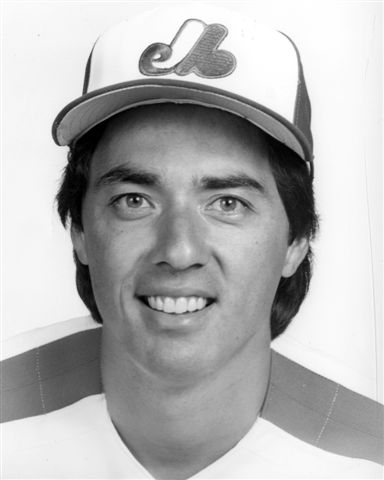 On June 5, 1943 the Philadelphia Phillies played the St. Louis Cardinals in a game interrupted after 7 1?2 innings. Cardinal third baseman Jimmy Brown could not play in the resumption of the game on July 29. He was now in the United States Army (see Ken Holtzman). Whitey Kurowski, their regular third baseman replaced him in that game. There does not appear to be any player who was in the military when a game was suspended and then played in it when the game was resumed.
On June 5, 1943 the Philadelphia Phillies played the St. Louis Cardinals in a game interrupted after 7 1?2 innings. Cardinal third baseman Jimmy Brown could not play in the resumption of the game on July 29. He was now in the United States Army (see Ken Holtzman). Whitey Kurowski, their regular third baseman replaced him in that game. There does not appear to be any player who was in the military when a game was suspended and then played in it when the game was resumed.
On June 1, 1958, the Cincinnati Reds and the Philadelphia Phillies played in game suspended with one out in the top of the ninth inning. It was resumed August 11. A number of players were traded or sold by their team or were added to their team before the continuation (Don Newcombe, Johnny Klippstein, Steve Bilko, Walt Dropo, and Jim Hegan). In addition Phillies first baseman Ed Bouchee now played. Bouchee had an outstanding rookie season in 1957, but during the offseason had pleaded guilty to multiple counts of exposing himself to young females. He did not go to jail but was placed on probation. In addition he was hospitalized in the Institute of Living (Hartford, Connecticut) for several months. Thus, he was residing in a psychiatric hospital during a game in which he officially played.
KEEPING A STREAK ALIVE
Stan Musial from April 15, 1952 through August 22, 1957 set the National League record for consecutive games played with 895 (subsequently broken by Billy Williams). However, it took a suspended game to keep the streak alive. After 862 games (beginning on the final game of the 1951 season), Musial did not play in the second game of the July 21, 1957 doubleheader. According to the St. Louis Post-Dispatch, “The combination of the doubleheader and the hot humid weather was too formidable,” and Musial did not play. With one out in the top of the ninth, Ken Boyer singled and the game was suspended.
When the game was resumed on August 27, Musial immediately pinch ran for Boyer and then played first base for the bottom of the ninth. This extended his streak that eventually ended after the August 22, 1957 game.
STEPHEN D. BOREN MD, FACEP, MBA has been a member of SABR since 1979. Besides being a board-certified emergency medicine physician, he is medical director for Medicare B in eight states. He was stationed in the US army in Korea where the real “M*A*S*H” took place. In addition to multiple publications in the “Baseball Research Journal,” “The National Pastime,” and “Baseball Digest,” he has 53 medical publications. He believes that he is the only person ever to be published in “Baseball Digest,” “New England Journal of Medicine,” and the “Wall Street Journal” in a single calendar year. Contact him at sdboren@uic.edu.
Acknowledgments
The author wishes to acknowledge extensive use of Retrosheet.org.
Sources
Harry Simmons, So You Think You Know Baseball? (New York: Fawcett World, 1960), 129.
The Sporting News Baseball Guides, 1942–2007.
The Sporting News Baseball Registers, 1942–2008
The Sporting News NBA Guide, 1980.
The Sporting News microfilm.
Reach Baseball Guides, 1902–39
Spaulding Baseball Guides, 1902–39
Reach-Spalding Baseball Guides, 1940–41.
Sports Encyclopedia: Baseball 2005. Neft, Cohen, Neft. St. Martin’s Griffin
Press.
Chicago Tribune microfilm.
Chicago Sun-Times microfilm.
Chicago Herald American microfilm
St. Louis Post-Dispatch microfilm.
The New York Times microfilm.
www.ESPN.com
Who’s Who In Baseball, 1944–2008


